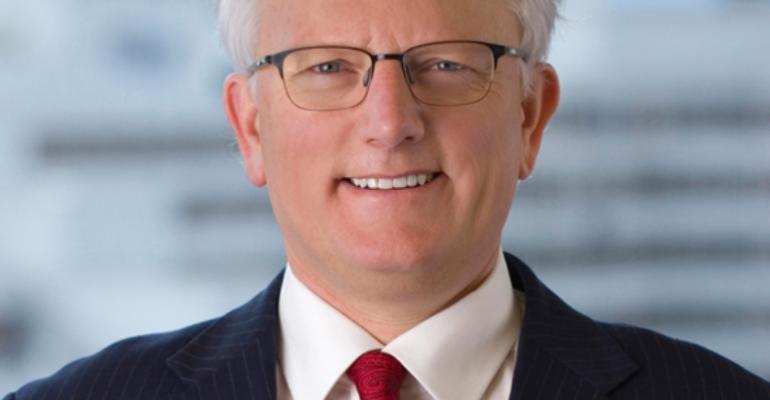If the headlines are to be believed, the race to lead the next era of the global automotive and mobility sector already has been won.
Elon Musk and his leadership team at Tesla have propelled a company that was selling just a few hundred cars in 2012, to one that Wall Street now values in excess of $50 billion.
Tesla’s valuation now eclipses those of its more established industry rivals, the same companies that defined the global automotive trade over the past century.
But go beyond the headline numbers and the picture is more complex. The companies that will emerge victorious in the race to lead the global automotive and mobility market in the long term remain to be determined.
The automotive industry is witnessing an unprecedented convergence of technological disruption that offers those working in the sector both incredible opportunity and considerable risk. Any automotive executive can testify that the only certainty in the automotive industry is uncertainty.
Leaders contend with a dizzying array of challenges, ranging from the advent of driverless cars and increasing autonomy to new efficiency standards, safety improvements, mobility and connectivity.

Rapidly changing consumer tastes present new challenges, too. These include increasing consumer desire for personalization, changing attitudes toward ownership and the increased prevalence of ride sharing. Given the plethora of challenges, it becomes easy to see why the race to dominate the global automotive industry remains unclear.
Nevertheless, what remains abundantly clear is the speed of change with which the industry must cope.
New mergers, acquisitions, investments, joint ventures and other partnerships seemingly are announced on a daily basis, with established players and newer entrants to the global market seeking to gain a meaningful foothold in the future. PwC reports first-half 2017 global automotive mergers and acquisitions activity rose 14% to $24.4 billion.
A key player has been Zhejiang Geely Holding Group, the Chinese multinational automaker that has transformed itself in less than 10 years. Once a regional Asian player, it is at the vanguard of global industry change.
Volvo Cars, which Geely acquired in 2010, recently announced plans to add electrification to all its vehicles beginning in 2019. At the same time, Geely announced plans to buy Terrafugia, an MIT-backed flying car start-up.
Meanwhile, in May, Ford appointed Jim Hackett as its new CEO, a move that garnered considerable interest, notably for his background running Ford’s recently established Smart Mobility unit.
Hackett is charged with delivering “transformational leadership” by executing on a program of change necessary to modernize elements of the iconic business, which celebrates its 115th birthday next year.
Both examples demonstrate the rapid rate of change affecting the industry. They show how companies now are considering and executing on disruptive opportunities – beyond traditional consolidation plays – that never would have reached a CEO’s inbox a few years ago.
As highlighted in the previous edition of Hogan Lovells’ Pulse, globalization continues to fuel automotive M&A in 2017. For example, The Wall Street Journal reports that during first-half 2017, Chinese investors inked eight overseas transactions in the automotive sector compared with only nine investments during all of 2016.
Globalization and technological disruption also is driving a new spirit of cooperation in the industry. The notion of collaborating with a rival would have been anathema for industry leaders not long ago. However, working collectively to solve larger industry challenges is now a critical element of the playbook for any automotive CEO, whether based in Detroit, Seoul, Shanghai, Munich or London.
Club deals or joint ventures, as happened with Audi, BMW and Daimler joining forces to buy the digital mapping business HERE for $3.1 billion in 2015, are increasingly prevalent.
Some of the most critical challenges the industry faces today require formal cooperation between rivals. For example, development of an infrastructure to readily support widespread adoption of battery-electric vehicles is a problem unlikely to be solved by a single organization.
Executives considering collaboration also are looking beyond the traditional borders of the car industry to seek out new opportunities. New acquisition targets or strategic tie-ups are being found in unorthodox places. Volkswagen recently announced a partnership with Nvidia, a provider of artificial-intelligence solutions. The car rental group Avis will manage an autonomous-vehicle fleet of Google’s self-driving car unit Waymo.
The traditional industry playbook is being torn up as the challenges of rapid technological change are prompting automotive CEOs to re-evaluate their businesses. Fundamental industry tenets are being questioned, such as the need for an individual to own a vehicle.
If technology and market forces allow, why not simply share a car in the long term as part of a wider subscription-type model? Such a model also facilitates greater personalization, allowing the typical Chicagoan to drive a powerful SUV in the snowy winter and a convertible in the summer sunshine. The nimbleness required to respond to such a radical change would be a major challenge for automotive companies today.
From an M&A perspective, the developing legal and regulatory regimes addressing the new automotive and mobility industry impact many areas including intellectual property, data privacy, cybersecurity, vehicle safety and product liability.
The companies that best interpret and adapt to the considerable business and legal challenges facing the sector will be the ones to succeed in this M&A environment and compete in a race that has only just started.
Richard Horan and Will Yavinsky are partners in the Corporate Practice Group at Hogan Lovells. They co-chair the firm’s Automotive and Mobility M&A Working Group.





